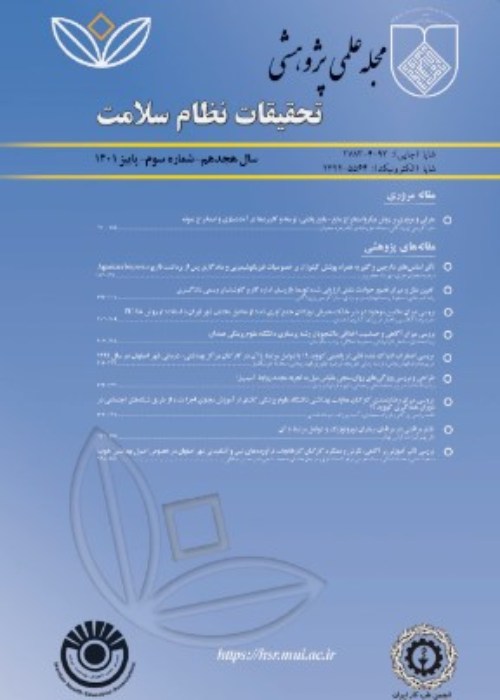Perceived Rewards of Unsafe Driving and Perceived Costs of safe driving as Predictors of Driving Status in Yazd
Author(s):
Abstract:
Background
Road traffic injuries are a major but neglected public health challenge that requires coordinated efforts for effective and sustainable prevention. Perceived rewards and costs are constructs of protection motivation theory whose characteristics have not been explored exactly. However, since there are some evidences regarding their effects on driving status, this study aimed to survey the status of these constructs. Methods
In this descriptive cross-sectional study, a total number of 379 individuals aged equal to or more than 19 who had a driving license were evaluated. Clustered random sampling was used to select subjects from the population covered by urban health care centers of Yazd. A valid and reliable questionnaire was used for data collection. It was a self report questionnaire including demographic variables and constructs of perceived rewards, perceived costs and unsafe driving behaviors. The data were analyzed by t-test, analysis of variance (ANOVA), correlation coefficient and linear regression analysis in SPSS18. Findings
Subject scored 44.8%, 46.5%, and 17.4% percents of the total possible scores in perceived rewards, perceived costs and unsafe driving behaviors, respectively. The most important perceived reward of unsafe driving was reported as "excitement of speeding" (56.4%) while the most significant perceived cost was reported as "longer times to get to destinations because of avoiding driving due to fatigue" (51.2%). Perceived rewards and costs differed significantly based on sex, marital status and age (P < 0.05). Moreover, perceived rewards and perceived costs were significantly correlated not only with each other, but also with unsafe driving (P < 0.01). The two constructs explained 28% of the variance of unsafe driving. However, perceived rewards (β = 0.382) was a better predictor than perceived costs (β = 0.194). Conclusion
Perceived rewards and costs have an important role in driving status. Since decreasing perceived rewards and costs can lead to increased safe driving, it needs to be a key principle in road safety education and policy-making. In addition, these two constructs are different from each other and could be considered as independent predictors of driving status.Language:
Persian
Published:
Journal of Health System Research, Volume:7 Issue: 4, 2012
Page:
422
magiran.com/p958170
دانلود و مطالعه متن این مقاله با یکی از روشهای زیر امکان پذیر است:
اشتراک شخصی
با عضویت و پرداخت آنلاین حق اشتراک یکساله به مبلغ 1,390,000ريال میتوانید 70 عنوان مطلب دانلود کنید!
اشتراک سازمانی
به کتابخانه دانشگاه یا محل کار خود پیشنهاد کنید تا اشتراک سازمانی این پایگاه را برای دسترسی نامحدود همه کاربران به متن مطالب تهیه نمایند!
توجه!
- حق عضویت دریافتی صرف حمایت از نشریات عضو و نگهداری، تکمیل و توسعه مگیران میشود.
- پرداخت حق اشتراک و دانلود مقالات اجازه بازنشر آن در سایر رسانههای چاپی و دیجیتال را به کاربر نمیدهد.
دسترسی سراسری کاربران دانشگاه پیام نور!
اعضای هیئت علمی و دانشجویان دانشگاه پیام نور در سراسر کشور، در صورت ثبت نام با ایمیل دانشگاهی، تا پایان فروردین ماه 1403 به مقالات سایت دسترسی خواهند داشت!
In order to view content subscription is required
Personal subscription
Subscribe magiran.com for 70 € euros via PayPal and download 70 articles during a year.
Organization subscription
Please contact us to subscribe your university or library for unlimited access!



